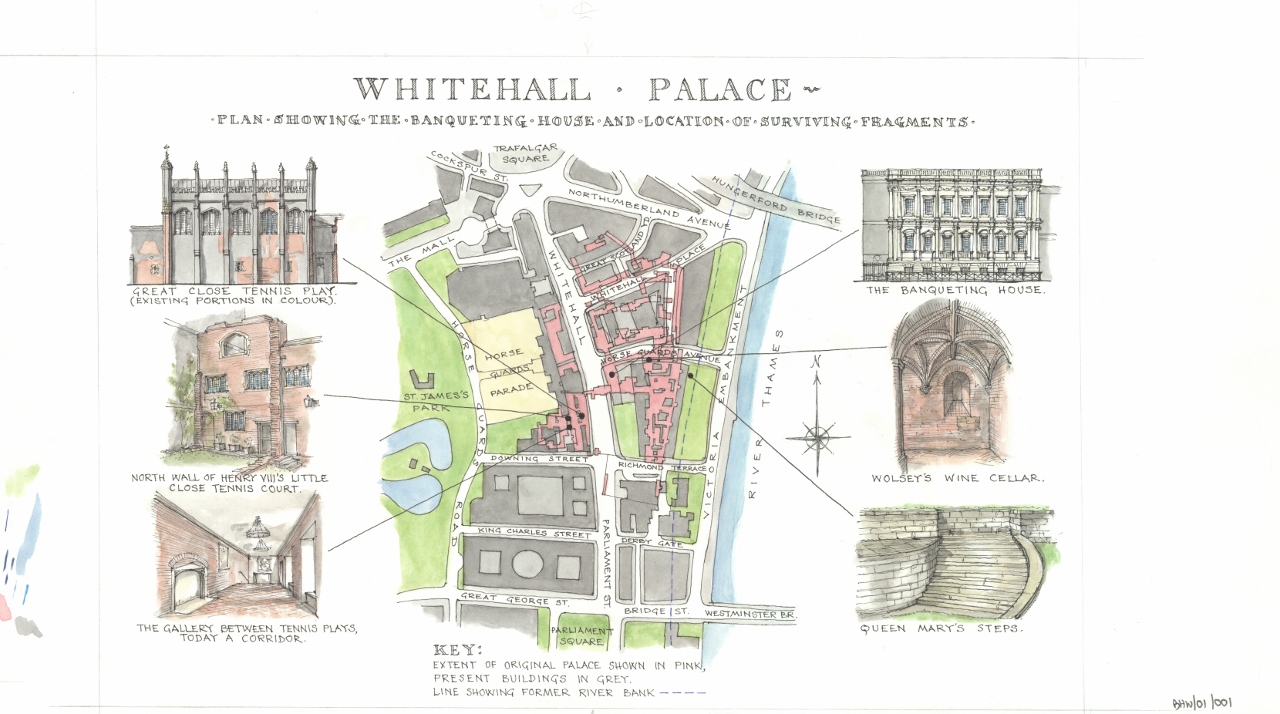The Lost Palace of Whitehall
Chapter 6 : “Reduced to a heap of rubbish and ashes”
While a fire paved the way for the construction of Inigo Jones’s Banqueting House, fire was to mark the end of the royal palace of Whitehall. In 1698 flames spread across the palace destroying the Tudor great hall, chapel, king and queen’s lodgings and courtiers’ apartments. The significance of the Banqueting House was recognised and great pains were taken to save it. The Banqueting House had after all witnessed some of the most remarkable moments in the Stuart history of Whitehall Palace: Charles I’s execution against the west facade in 1649, the culmination of Charles II’s grand Restoration procession and William and Mary’s acceptance of the crown in the hall in 1689.
After two days of burning, Whitehall Palace was left uninhabitable, “reduced to a heap of rubbish and ashes”. The Banqueting House stood tall amongst the debris, on the spot where it still remains and can be visited today. Remnants of the lost Tudor palace are dotted around Whitehall; Cardinal Wolsey’s wine cellar survives under the Ministry of Defence building and fragments of Henry VIII’s tennis courts can be seen in the Cabinet Office.

The 'Lost Palace of Whitehall' interpretative tours, based at Banqueting House, will be run by Historic Royal Palaces until 4th September 2016. Read our review of the tour here.


